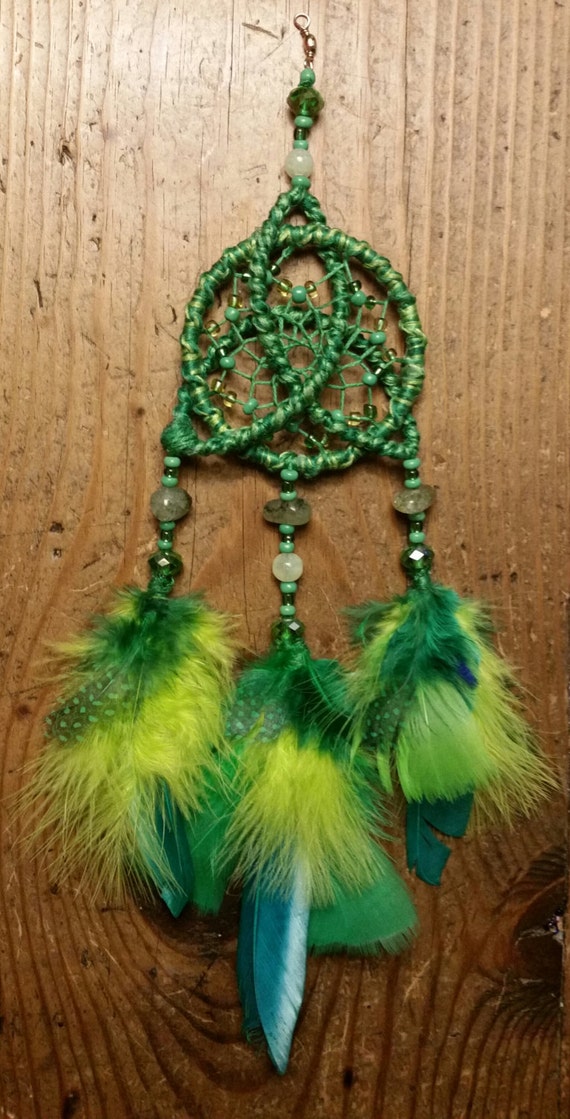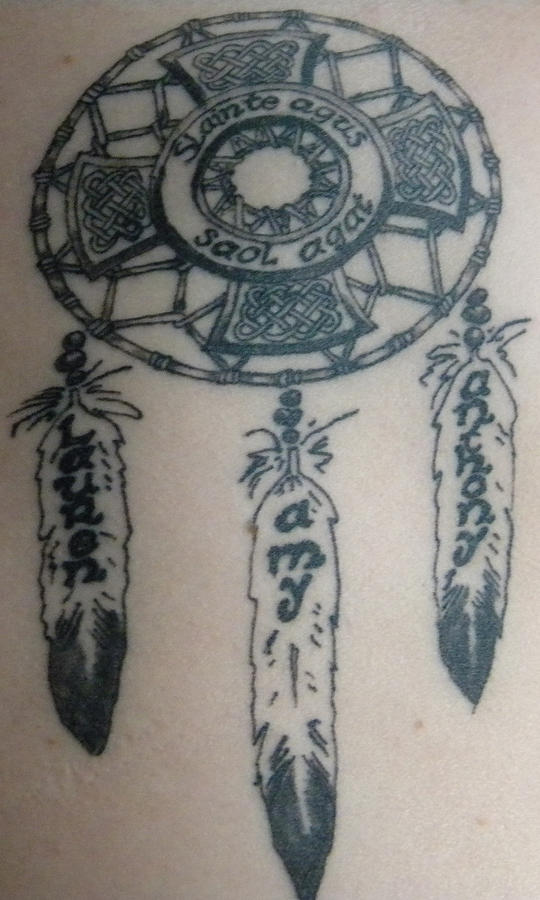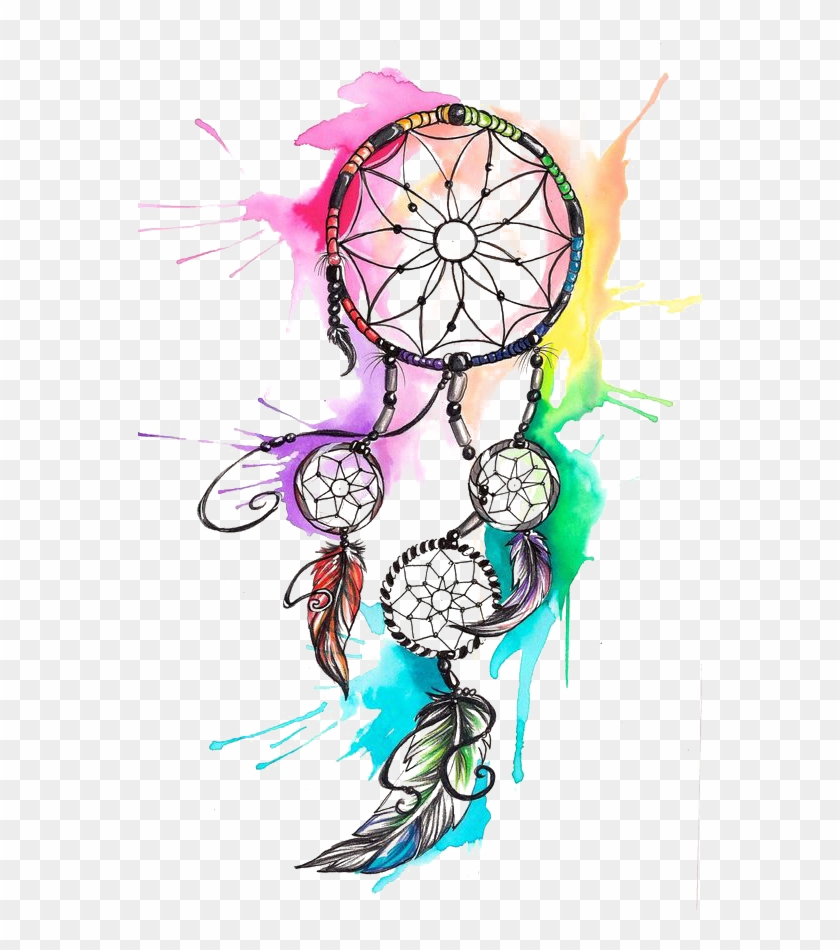Celtic Dream Catcher
The Celtic Cross has been present in Ireland from the early Middle Ages and it is arguably the most recognisable of the many Celtic symbols. Interestingly enough, some of the earliest Celtic Cross symbols in Ireland date back to the 8th or 9th century and can be found in Kilkenny and Laois. In some Native American and First Nations cultures, a dreamcatcher or dream catcher (Ojibwe: asabikeshiinh, the inanimate form of the word for 'spider') is a handmade willow hoop, on which is woven a net or web.The dreamcatcher may also include sacred items such as certain feathers or beads. Traditionally they are often hung over a cradle as protection. It originates in Anishinaabe culture as.
In Brief
I was wondering where. You got the number 10 from.A tradional dream catcher has 7-13 points with 7 representing the 7 nations or the 7 grandfathers. 8 is also common and reptesents the 8 legs of the spider. So saying that 10 points is somewhat untrue. Also although red willow is the preferred branch to make one, grape vine is acceptable as it. Make a Lampe Dream-catcher: Repurpose also the metallic lamp shades to make adorable looking dreamcatchers at home! Here the metallic lamp shade has first been wrapped in the leather suede and then the inside space has been filled by lacing the yarn web or braids and the custom beads have also been slipped onto the yarn during the braiding!
When people shop for souvenir dreamcatchers, they usually rely on color, design, and size preference. However, dreamcatchers are more than just a beautiful object to hang in your home. They hold great significance to the Native Americans and are viewed by some as protective amulets.
The design of the dreamcatcher, its number of points made from tied-together strings or sinews, represent different histories and various strokes of luck. Let’s take a look at what a dreamcatcher does and what it symbolizes.
History Of ‘Catching’ Dreams
Dreamcatchers are regarded as good luck charms everywhere in the world, and are thought to literally catch nightmares, only letting positive dreams enter the subconscious mind of a sleeping person.
The tradition of hanging up webbed dreamcatchers originated from Native Americans. It’s difficult to find a reservation in the U.S. or in Canada that doesn’t have dreamcatchers all around, but different tribes have different accounts of the lucky dreamcatcher’s legend.
- Ojibway Spider Woman Legend
According to the Ojibway, a spider woman named Asibikaashi wanted to continue caring for the children of the tribe despite the gentrification of America. She told the older women of the tribe that she couldn’t possibly watch over every bed each night.

To help Asibikaashi, the women of the tribe wove magic webs to symbolize the spider woman and her protection. Just as she trapped insects and bad omens in her sticky web, the dreamcatcher webs trap negative dreams and thoughts overnight, which are thought to perish when the sun finally shines upon the dreamcatcher every morning.
- Lakota Dream Legend
Meanwhile, the Lakota believed that one of their old, spiritual leaders had a dream where the great teacher Iktomi appeared as a spider. In this curious vision, Iktomi took some willow and began spinning a web as he discussed the cycle of life – from infancy to old age.
According to the seance, he showed the spiritual leader how the web was a perfect circle, but with a hole in the center. Iktomi allegedly told him that good ideas will be caught in the web, while the bad ones will slide right through the hole in the middle.
Dreamcatchers staged a major comeback in the reclamation movement of the 1960s and early 1970s, as a symbol of renewed pride for Native Americans despite the continent changing by the minute. It’s also associated with the New Age movement, and became popular as a spiritual symbol.
back to menu ↑Meaning and Symbolism of Dreamcatchers
Despite the stark difference between the legends of the dreamcatcher’s origin, the central idea behind the use of dreamcatchers as a lucky charm is consistent: it wards off negativity and retains the positive to achieve peace of mind.
The dreamcatcher also represents unconditional love, as it is usually made and given by someone who deeply cares about another. Even in Game of Thrones, Lady Catelyn Stark wove her own version of the lucky dreamcatcher to hang over the sickbed of her youngest child, Bran Stark.
Over the course of history, dreamcatchers have always been a symbol of someone caring enough to pray and wish for your protection. Even though dreamcatchers have become commercialized and many don’t know its significance, Native Americans have worked hard to preserve what it really means in their culture.
Every part of a traditional dreamcatcher contains meaning.
- Round frame – symbolizes the never-ending flow of life, since a circle doesn’t have a beginning or an end. It also signifies Mother Earth and everything in it that sustains life
- The web – represents the spider’s web that filters the bad and lets the good right through.
- Amulet/bead – certain types of dreamcatchers contain beads in between the webs or an amulet right in the middle. These are thought to contain the prayers and well wishes of the person giving the dreamcatcher
As mentioned earlier, even the number of points created by the interlocking of strings or sinews in dreamcatchers are said to hold special meaning:
- 5 points – the lucky star
- 6 points – represents an eagle, which in turn symbolizes courage
- 7 points – the grandfathers’ seven prophecies
- 8 points – represents the number of legs in the spider legends
- 13 points – the phases of the moon, which is also considered a symbol of protectionism and safety in the dark night
Regardless of the number of points in dreamcatchers, though, they are said to symbolize the following values:
- Good energy – Native Americans believed the air contains both good and bad energy, and dreamcatchers can act as some sort of ‘filter’ to boost the good energy and hamper the bad.
- Protection from harm – As discussed earlier, all the legends agree that dreamcatchers provide protection to the person whose bed it is hung over.
- Mother Earth’s good graces – Native Americans have an incredible affinity with nature, so owning a dreamcatcher is thought to put you on the good side of the Earth, especially with one that directly came from the hands of a Native.
Dreamcatchers in Jewelry and Fashion
Because of its fascinating history and magnificent symbolism, dreamcatchers have made their way not just into homes, but even to people’s jewelry and fashion. Dreamcatchers make meaningful gifts, especially if the receiver understands the significance of the symbol.
Necklaces with dreamcatcher pendants are a staple in most souvenir shops in the U.S. and the rest of the world, and so are dreamcatcher earrings. Some are made from precious metal like silver or even stainless steel, while others are more traditional, using actual threads and amulets. These tend to have a bohemian, rustic look and are ideal if you want to dress down.
Editor's Top Picks YACQ 925 Sterling Silver Dream Catcher Feather Turquoise Net Custom Drop Dangle... Last update was on: February 7, 2021 1:08 pm
YACQ 925 Sterling Silver Dream Catcher Feather Turquoise Net Custom Drop Dangle... Last update was on: February 7, 2021 1:08 pmBohemian dresses and shirts also incorporate the design and symbolism of dreamcatchers. Aside from the lucky symbolism, dreamcatchers make wonderful patterned designs that are fashionable to wear, even for those who don’t believe in its symbolism.
back to menu ↑Some Frequently Asked Questions About Dreamcatchers
How do you make a dreamcatcher?
If you’re somewhat artsy, making your own dreamcatcher is a nice way to create a symbolic and meaningful object that’s also highly decorative. This video is a step-by-step guide on how to make a dreamcatcher. Turns out it’s much easier than it looks.
Are dreamcatchers good luck?
For some people, dreamcatchers represent good luck and are believed to ward of bad energy, replacing it with good energy.
Where do you hang a dreamcatcher?
Because these objects are meant to protect you from bad dreams, it makes sense to hang them near your bed. Some people hang dreamcatchers in their car and workspaces. However, if you’re not superstitious and you simply want the dreamcatcher as a beautiful, decorative motif, you can hang it wherever you prefer.
Is it bad to throw away a dreamcatcher?
For the superstitious, throwing away a dreamcatcher will bring bad luck and release the bad dreams that have been caught in the dreamcatcher. They believe its best to dispose of the dreamcatcher in a respectful way.
Can a dreamcatcher become full of bad dreams?
Some believe that a dreamcatcher can become full of bad dreams to the point that it will become clogged and stop protecting the sleeper. Again, if you’re not superstitious, this won’t be an issue. If you are, you might want to clear the dreamcatcher of the bad dreams.
back to menu ↑In Brief
Native American legends have consistently depicted dreamcatchers as a symbol of good, positive energy. To this day, elders are known to weave their young ones a dreamcatcher or two to protect them from bad dreams and negative energies in the air while they sleep.
Needless to say, anyone who receives a dreamcatcher is considered lucky for having someone care about them so much to actively hope they are protected all the time, even when they’re asleep.
In some Native American and First Nations cultures, a dreamcatcher or dream catcher (Ojibwe: asabikeshiinh, the inanimate form of the word for 'spider')[1] is a handmade willow hoop, on which is woven a net or web. The dreamcatcher may also include sacred items such as certain feathers or beads. Traditionally they are often hung over a cradle as protection.[2] It originates in Anishinaabe culture as the 'spider web charm' (Anishinaabe: asubakacin 'net-like', White Earth Band; bwaajige ngwaagan 'dream snare', Curve Lake Band[3]), a hoop with woven string or sinew meant to replicate a spider's web, used as a protective charm for infants.[2]
Dreamcatchers were adopted in the Pan-Indian Movement of the 1960s and 1970s and gained popularity as a widely marketed 'Native crafts items' in the 1980s. [4]
Ojibwe origin[edit]
Ethnographer Frances Densmore in 1929 recorded an Ojibwe legend according to which the 'spiderwebs' protective charms originate with Spider Woman, known as Asibikaashi; who takes care of the children and the people on the land. As the Ojibwe Nation spread to the corners of North America it became difficult for Asibikaashi to reach all the children.[2] So the mothers and grandmothers weave webs for the children, using willow hoops and sinew, or cordage made from plants. The purpose of these charms is apotropaic and not explicitly connected with dreams:
Even infants were provided with protective charms. Examples of these are the 'spiderwebs' hung on the hoop of a cradle board. In old times this netting was made of nettle fiber. Two spider webs were usually hung on the hoop, and it was said that they 'caught any harm that might be in the air as a spider's web catches and holds whatever comes in contact with it.'[2]
Basil Johnston, an elder from Neyaashiinigmiing, in his Ojibway Heritage (1976) gives the story of Spider (Ojibwe: asabikeshiinh, 'little net maker') as a trickster figure catching Snake in his web.[5][clarification needed]
Modern uses[edit]

While Dreamcatchers continue to be used in a traditional manner in their communities and cultures of origin, a derivative form of 'dreamcatchers' were also adopted into the Pan-Indian Movement of the 1960s and 1970s as a symbol of unity among the various Native American cultures, or a general symbol of identification with Native American or First Nations cultures.[4]
The name 'dream catcher' was published in mainstream, non-Native media in the 1970s[6] and became widely known as a 'Native crafts item' by the 1980s,[7]by the early 1990s 'one of the most popular and marketable' ones.[8]
In the course of becoming popular outside the Ojibwe Nation during the Pan-Native movement in the '60s, various types of 'dreamcatchers', many of which bear little resemblance to traditional styles, and that incorporate materials that would not be traditionally used, are now made, exhibited, and sold by New age groups and individuals. Some Native Americans have come to see these 'dreamcatchers' as over-commercialized, like 'sort of the Indian equivalent of a tacky plastic Jesus hanging in your truck,' while others find it a loving tradition or symbol of native unity. [4]
A mounted and framed dreamcatcher is being used as a shared symbol of hope and healing by the Little Thunderbirds Drum and Dance Troupe from the Red Lake Indian Reservation in Minnesota. In recognition of the shared trauma and loss experienced, both at their school during the Red Lake shootings, and by other students who have survived similar school shootings, they have traveled to other schools to meet with students, share songs and stories, and gift them with the dreamcatcher. The dreamcatcher has now been passed from Red Lake to students at Columbine CO, to Sandy Hook CT, to Marysville WA, to Townville SC, to Parkland FL.[9][10][11]
See also[edit]
References[edit]
- ^'Free English-Ojibwe dictionary and translator - FREELANG'. www.freelang.net.
- ^ abcdDensmore, Frances (1929, 1979) Chippewa Customs. Minn. Hist. Soc. Press; pg. 113.
- ^Jim Great Elk Waters, View from the Medicine Lodge (2002), p. 111.
- ^ abc'During the pan-Indian movement in the 60's and 70's, Ojibway dreamcatchers started to get popular in other Native American tribes, even those in disparate places like the Cherokee, Lakota, and Navajo.' 'Native American Dream catchers', Native-Languages
- ^John Borrows, 'Foreword' to Françoise Dussart, Sylvie Poirier, Entangled Territorialities: Negotiating Indigenous Lands in australia and Canada, University of Toronto Press, 2017.
- ^'a hoop laced to resemble a cobweb is one of Andrea Petersen's prize possessions. It is a 'dream catcher'—hung over a Chippewa Indian infant's cradle to keep bad dreams from passing through. 'I hope I can help my students become dream catchers,' she says of the 16 children in her class. In a two-room log cabin elementary school on a Chippewa reservation in Grand Portage' The Ladies' Home Journal 94 (1977), p. 14.
- ^'Audrey Speich will be showing Indian Beading, Birch Bark Work, and Quill Work. She will also demonstrate the making of Dream Catchers and Medicine Bags.' The Society Newsletter (1985), p. 31.
- ^Terry Lusty (2001). 'Where did the Ojibwe dream catcher come from? | Windspeaker - AMMSA'. www.ammsa.com. Sweetgrass; volume 8, issue 4: The Aboriginal Multi-Media Society. p. 19.CS1 maint: location (link)
- ^Marysville School District receives dreamcatcher given to Columbine survivors By Brandi N. Montreuil, Tulalip News. Posted on November 7, 2014
- ^'Showing Newtown they're not alone - CNN Video' – via edition.cnn.com.
- ^Dreamcatcher for school shooting survivors (paywall)
External links[edit]
| Wikimedia Commons has media related to Dreamcatcher. |